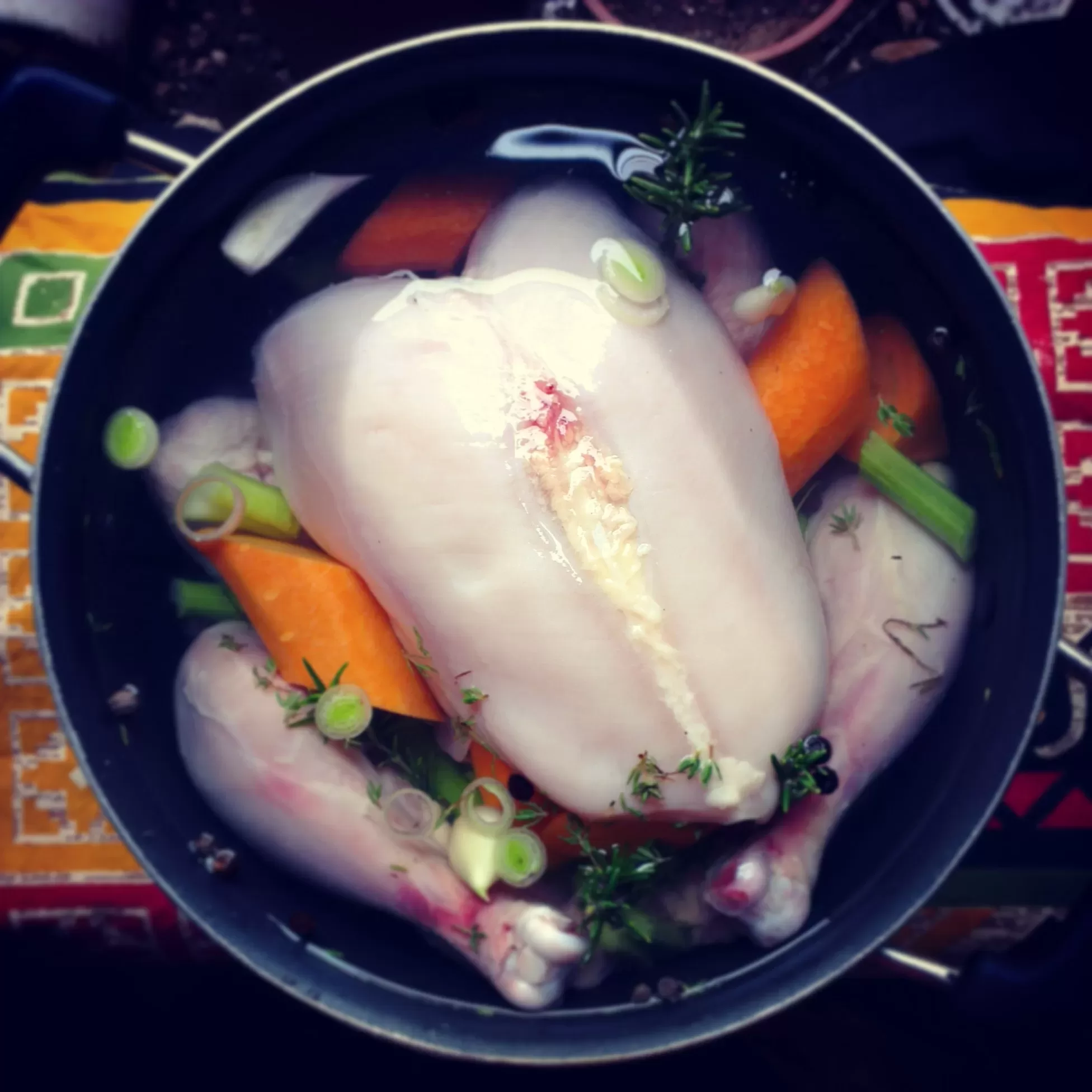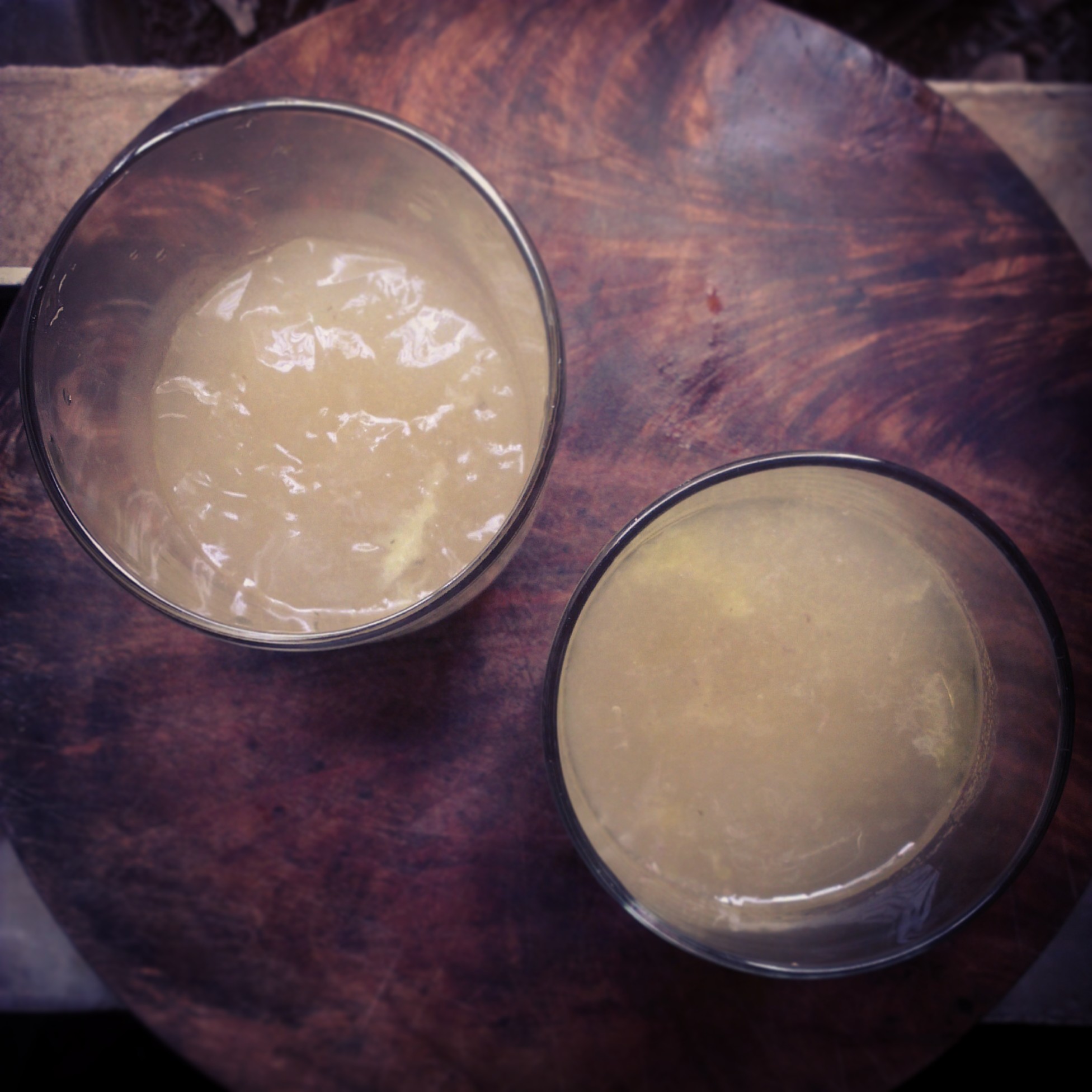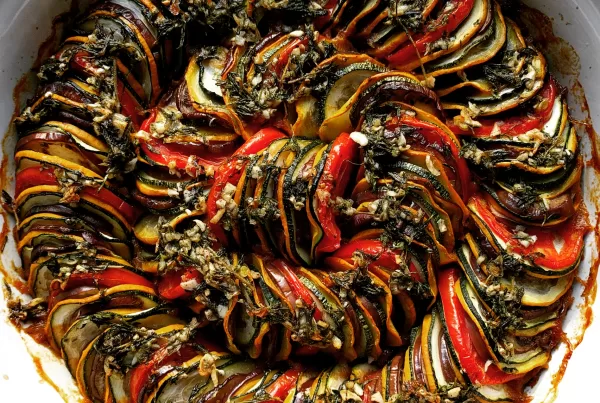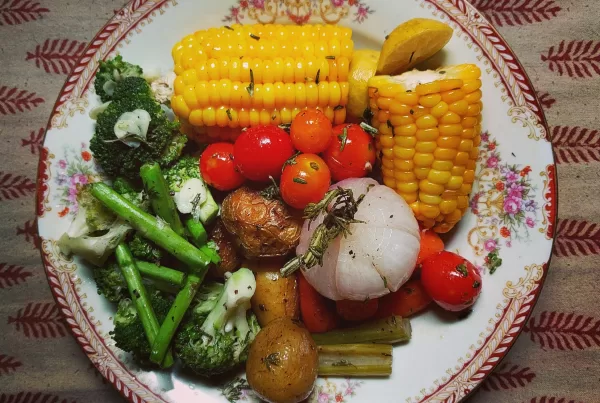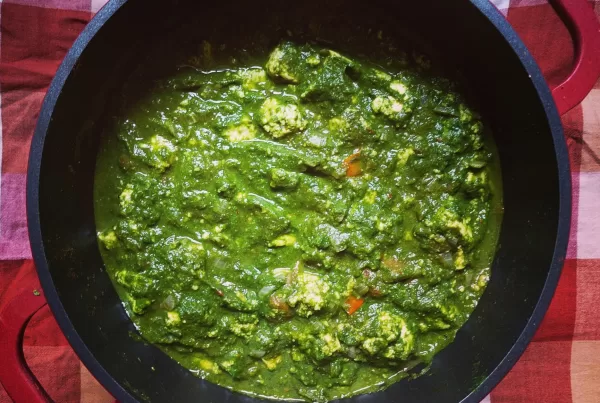Once in a month or so, I buy a whole chicken and stock it. Stocking is one of those processes that is wildly efficient — it uses the entire chicken (some even use the head and feet) and a lot of vegetables without any fancy preparatory techniques or special skills. The flavour they contribute to anything you make with it will put any factory extruded bullion cube to shame. It’s so good that someone even put it in a cocktail (the Velociraptor, is made with 1½ Oz vodka, 4 tablespoons of stock and three dashes of Tabasco sauce).
Why should you make chicken stock?
- Because it’s very good for you. Stock is extremely nutritious and healthy; it helps your immune system, aids in the better processing of proteins by your body (which is perfect for gym nuts, since you constantly need protein to keep your muscles healthy and healing), it’s rich in minerals, especially calcium, and finally is the base of the universal potion of healing, chicken soup.
- It’s rich in gelatine. You’ll see this in action when you chill your stock in the fridge. It’ll turn into a jelly (see picture at the bottom) which you can quite literally scoop with a spoon. Gelatine helps in repairing the body, with digestion (ever wondered why they feed all those patients jelly in hospitals?) and also helps people with anaemia and calcium deficiency.
- It’s super easy! You don’t need to chop up the vegetables with much skill. You don’t even have to break the chicken down. The chicken will break itself down as it slow-cooks over hours and you’ll be easily able to pick the meat off the bones and put it to an assortment of uses. It’s quite literally about throwing everything into a crockpot and forgetting about it for a few hours.
Till it looks like this:
 You can easily separate out the solids using a colander or large sieve. Use the vegetables with some of the stock and chicken to make delicious chicken soup with. The chicken pretty much shreds itself, so you can freeze this away to use through the week (ideally the next three days) in sandwiches, crepes, salads or anything that you’d like to chickenify-up a little.
You can easily separate out the solids using a colander or large sieve. Use the vegetables with some of the stock and chicken to make delicious chicken soup with. The chicken pretty much shreds itself, so you can freeze this away to use through the week (ideally the next three days) in sandwiches, crepes, salads or anything that you’d like to chickenify-up a little.
Some folks advise storing your stock in ice cube trays so you can pop a convenient cube into your soups or pastas. This sounds like it was invented by a modernist.
If your chickens were healthy and happy, they’d be rich in gelatine. This means that when chilled, the stock would thicken and become like jelly. This makes it very convenient to scoop with a spoon (or even at times, cut with a knife) and dispense into recipes that require it.
Masterstock
The concept of masterstock is something of a culinary legend. Chinese kitchens would create stock and re-use it over and over (by preserving some of the original stock and re-using it when they make fresh stock), thereby adding more to the flavour of each preparation of stock. Some of these masterstocks have been kept going for hundreds and hundreds of years, collecting flavours over the centuries (can you taste a hint of smoky war-torn chicken from the Sino-Japanese war?).
If you’re trying to make your own masterstock (and you totally should, my occasional fridge-neglect and travel keeps me from attempting this experiment successfully), do keep in mind that stock does tend to have a shelf life of about four days, and will need to be re-heated to kill off any microbial invasions.
The Recipe
Ingredients
1 whole chicken (at room temperature)
2 litres cold water (approx)
2 carrots
2 stalks of celery
1 stalk of leek
1 large onion
1 large bayleaf
½ teaspoon thyme
1 tablespoon vinegar
1 teaspoon peppercorns
2 star anise
Method
- Chop up the onions and leeks and spread them at the bottom of your crockpot or stock pot.
- Sit your chicken on top of this and add all the remaining ingredients.
- Add water till the entire chicken is submerged. Let it sit for about thirty minutes. It is important to use cold water (or room temperature, the way it comes out of the tap/filter) because this helps with the extraction of collagen better.
- Cover the pot and put it on the stove/hob/burner at its lowest setting.
- Let this cook for between two to four hours, skimming away any froth that might collect on the surface of the liquid.
- Once cooked, use a colander to separate out the stock from the solid part. Use the vegetables to make a soup, pick the bones out and throw them away. Careful while giving this to your dog or cat, they might choke on the bones. Store the chicken in a Ziploc bag, use this in sandwiches or pastas (this is basically your own home made shredded chicken).
- Transfer the stock into a bowl and freeze. The fat should float up to the surface, which can be easily spooned away. A lot of the nutrients in stock are actually fat soluble, which means the fat is actually good for you in measured doses, so don’t go too crazy with the fat-spooning.
Note: It is important to ensure that the stock doesn’t come to a rolling boil, which is why the stove is always set on its lowest setting. Putting it on a higher setting will bring the stock to a rolling boil, which will turn it very cloudy. Stock should ideally be clear.


